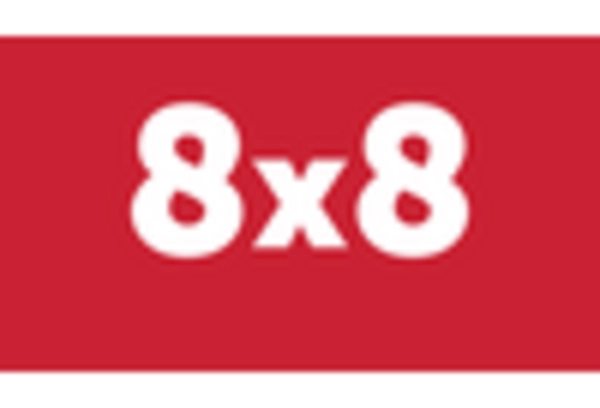Integration with Emerging Technologies
The integration of emerging technologies is a crucial driver for the ip telephony market. As businesses in the US increasingly adopt technologies such as artificial intelligence, machine learning, and the Internet of Things (IoT), the demand for IP telephony solutions that can seamlessly integrate with these systems is rising. This integration allows for enhanced functionalities, such as predictive analytics and automated customer service, which can significantly improve user experience. The market is expected to expand as organizations seek to leverage these technologies to gain a competitive edge. Furthermore, the ability to connect IP telephony systems with CRM platforms and other business applications enhances operational efficiency, making it a vital component of modern business strategies. As such, the ip telephony market is poised for growth as it adapts to the evolving technological landscape.
Cost Efficiency and Operational Savings
Cost efficiency remains a significant driver for the ip telephony market. Organizations in the US are increasingly recognizing the financial benefits of transitioning from traditional telephony systems to IP-based solutions. By utilizing existing internet infrastructure, businesses can reduce their telecommunication expenses by up to 50%. This shift not only lowers operational costs but also allows for scalable solutions that can grow with the organization. The ip telephony market is witnessing a surge in demand as companies seek to optimize their budgets while maintaining high-quality communication. Furthermore, the ability to consolidate voice, video, and data services into a single platform enhances overall efficiency, making IP telephony an attractive option for businesses aiming to streamline operations and improve their bottom line.
Increased Demand for Remote Work Solutions
The rise of remote work has significantly influenced the ip telephony market. As more organizations in the US adopt flexible work arrangements, the need for reliable and efficient communication tools has surged. IP telephony solutions provide the necessary infrastructure for remote teams to collaborate effectively, regardless of their physical location. This trend is reflected in the market's growth, with estimates suggesting an increase in adoption rates by over 30% in the next few years. The ability to integrate with various collaboration tools further enhances the appeal of IP telephony, allowing seamless communication across different platforms. As businesses continue to embrace remote work, the demand for robust IP telephony solutions is expected to remain strong, driving innovation and investment in the market.
Technological Advancements in Communication
The rapid evolution of communication technologies is a primary driver for the ip telephony market. Innovations such as Voice over Internet Protocol (VoIP) and high-definition audio have transformed traditional telephony. In the US, the market is projected to grow at a CAGR of approximately 10% from 2025 to 2030, driven by these advancements. Businesses are increasingly adopting IP telephony solutions to enhance communication efficiency and reduce costs. The integration of artificial intelligence and machine learning into telephony systems further enhances user experience, enabling features like automated call routing and voice recognition. As organizations seek to improve operational efficiency, the demand for advanced communication solutions in the ip telephony market is likely to increase, reflecting a shift towards more sophisticated and user-friendly technologies.
Regulatory Compliance and Security Enhancements
Regulatory compliance and security concerns are increasingly shaping the ip telephony market. Organizations in the US are under pressure to adhere to various regulations regarding data protection and privacy. As a result, there is a growing emphasis on IP telephony solutions that offer robust security features, such as encryption and secure access controls. The market is responding to this demand, with many providers enhancing their offerings to ensure compliance with regulations like the Health Insurance Portability and Accountability Act (HIPAA) and the General Data Protection Regulation (GDPR). This focus on security not only protects sensitive information but also builds trust with customers. Consequently, the ip telephony market is likely to see continued growth as businesses prioritize secure communication solutions that meet regulatory standards.
















Leave a Comment